Speaker's Biographies & Abstracts

Rob is Director of Geonovum since april 2007. Making the Government work smarter when it comes to location, is the common thread in his work in the public sector. After studying social geography in 1985 he got to do with the introduction of geographic information systems at the then National Physical Planning Agency. Then he got job at the National Institute of public health and environment and the Ministry of agriculture, nature and food quality. His previous job was head of the GIS Competence Center of the Ministry of agriculture, nature and food quality. Rob is a member of the Board of Directors of the Open Geospatial Consortium and connected with the Spatial Information Laboratory of the VrijeUniversiteit Amsterdam.

Jon Fingland is a Business Unit Director for Trimble Buildings, he began his career as a Project Manager for a Top 100 general contractor where he specialized on healthcare projects and programs. He later joined California-based Meridian Systems working in various management capacities with the company's Prolog and Proliance construction program and capital management software. After Meridian was acquired by Trimble, Mr. Fingland led the subsequent acquisitions of WinEst, Vico Software, and Dimension5 for Mobile Field Management, and has since played a major role in the planning and creation of Trimble Buildings Group. Mr. Fingland holds degrees in Structural Engineering and Construction and a Master's degree in Business Management
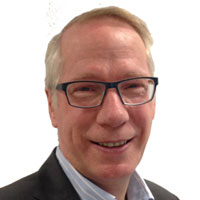
Dr Winkels is the current BIM program manager at Rijkswaterstaat, member of the National Council on BIM in the Netherlands and Chair of the European CEDR-group on BIM Information. He has a background of 26 years of experience at Rijkswaterstaat including Senior Advisor of the Board of Directors at Rijkswaterstaat, Management leader and expert in BIM-approaches, BIM-implementation, Assetmanagement and BIM-modelling.
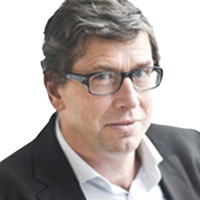
Zef Hemel (1957) is spatial planner. In the past he was chief editor of 'Stedebouw & RuimtelijkeOrdening' (Urban and Regional Planning), the professional magazine for urban planners and designers of the Dutch Institute of Housing and Spatial Planning in The Hague. In 2011 he organized, as a member of the think tank of the Ministry of Housing, Spatial Planning and the Environment, the symposium 'Creative Cities' in Amsterdam. From 2001 to 2004 he was director of the Rotterdam Academy of Architecture and Urban Design. From 2004 till 2014 he was member of the board of the Urban Planning Department of the City of Amsterdam. There he organized 'The Freestate of Amsterdam' in 2009, which was the start of a different kind of planning. Since 2012 he is Professor on Urban and Regional Planning at the University of Amsterdam (the Wibaut Chair). He is also working for the Amsterdam Economic Board. Hemel studied human geography at the State University of Groningen and wrote his PhD in history of art at the University of Amsterdam, for which he was awarded the Prof. Ter Veen Award 1994.

Luke Cooper is a Digital Specialist which encompasses Geographic Information Systems (GIS) as well as wider digital environments including; asset management, desktop and mobile applications, augmented reality and 3D visualisation. He has a strong background with data capture, storage, manipulation and visualisation using innovative techniques and technology. He strives for holistic and simplistic solutions to meet the needs of complex problems. He has worked across numerous sectors and bodies including Network Rail, Welsh Water, Welsh Government and local councils.
Abstract "Digital Railway: Great Western Route Modernisation"The Great Western Route Modernisation (GWRM) project is one of the biggest investments in Britain’s railways in over a century. As part of the electrification works in South Wales a range of tools have been used to help streamline design. Advances in 3D, Web and Mobile technology have enabled engineering design to capture a large variety of data quickly and easily. A centralised relational database has been created to orchestrate and integrate this data. This has enabled multiple stakeholders, designers, clients and contractors to view and integrate with the same data but from different perspectives relevant to their needs. Web based solutions have been sought and implemented to ensure that data is visible regardless of training of software requirements whether this is to view Point Clouds, 360 imagery, as well as 2D and 3D geometry. This talk aims to highlight how these sources interconnect and have had huge benefits to the project and industry.

Nick has a background in project management and master's degree in Applied Project Management. In nearly 20 years of experience he has undertaken a variety of roles in both public and commercial sectors with organizations such as Fujitsu Services, Honeywell, British Petroleum, HMRC- Her Majesty's Revenue and Customs, Primavera Systems and Oracle. He relishes the goals of enterprise project and portfolio management and thrives upon tackling the associated business challenges such as integration, adoption, compliance, visibility at both end user/recipient and Executive levels emphasizing "leave no one behind for successful project outcomes". Most recently Nick has taken a lead role in developing the Oracle Primavera SMART City and Public Infrastructure Cloud Accelerators which aim to promote improved governance, projects controls and visibility across mega capital project portfolios at country and local levels for both developing and developed nations.
Abstract "The World is Watching" Cloud GeoBIM in SMART City Project DeliveryHow can GeoBIM combined with rigorous portfolio planning and project performance monitoring be used effectively in the world of big data and IoT? The ability to both undertake such analysis but then more importantly respond on findings in a coordinated fashion provides stakeholders the critical information needed to take proactive, decisive management actions to help its citizenry.
In this session we explore the importance of GeoBIM within the SMART City Projects sector- The marriage of BIM with location and the critical link to project management and monitoring solutions for full infrastructure lifecycle efficiency. Through this aligned 'harmony' can we perhaps help tackle some of the key challenges of today such as:
- The acute awareness of cities needs to become 'smarter' to deal with the challenges of climate and environmental change whilst creating inspirational spaces and places.
- The global 'competition' to attract the most skilled residents, companies and organizations. To do this, they will have to improve their efficiency and ensure that their infrastructure and services are fully integrated.
It's no surprise integrating BIM has fast become the strategic enabler for winning project work, compliance to standards, and provision of owner mandated data but do we really fully appreciate how much benefit it yields from cross sector multi projects, programs and portfolio's.
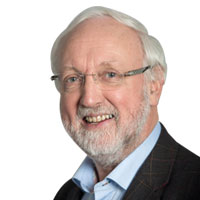
Henk J. Scholten studied Mathematics and Geography at the VrijeUniversiteit Amsterdam and obtained his Ph.D. on the subject of models for housing allocation at the Faculty of Geography of the University of Utrecht (NL) in 1988. Since 1990 he is professor in Spatial Informatics at the Faculty of Economics of the VrijeUniversiteit Amsterdam and Director of the Spinlab (www.spinlab.vu.nl). Prof. Scholten is founder and CEO of Geodan, one of the largest European companies specialised in Geospatial Information Technology (www.geodan.nl). On Friday April 29th, 2005, Prof. Scholten received a Royal Decoration for his significant contribution to geo-information, both on a national and international level.

John is responsible for developing the Topcon BIM strategy in Europe including our strategic partnership with Autodesk. John has recently joined Topcon from Finnish Autodesk partner and BIM software provider, Profox Companies where he was Director responsible for business development and sales of Autodesk based BIM software solutions . Previously he was Sales Manager at NavisWorks Ltd and Plant Solutions Sales Manager at Autodesk Ltd. John has over 20 years’ experience in CAD and data management ranging from software development through consulting to business development and sales.
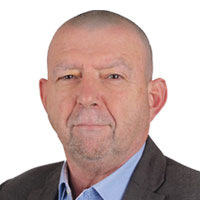
Jan Blaauboer is a Dutch native who started his career as a surveyor with the City of Rotterdam, The Netherlands. This introduced him to the early days of computing. Jan became a systems analyst / programmer and developed software on, amongst others, an Intergraph system. That introduced him to Intergraph, where he held several positions in product marketing and support. He was also responsible for setting up the MicroStation Reseller network in the Netherlands and Belgium in the late 80s of the 20th century. Jan then moved to one of the then leading vendors of data-communication equipment and spend 11 years with that company in various management roles, also internationally. Jan subsequently joined Capgemini as a Principal Consultant, specializing in processes around compliance and quality management. He assisted clients all over Europe in setting up systems for these disciplines. In those days he was highly involved with the pharmaceutical industry. In 2008 Jan joined Bentley Systems, initially as the Sales Director for Civil and Local Government clients in the Benelux (Belgium, The Netherlands and Luxembourg). Jan is one of the people behind the 'BIM for Cities' concept and he is now responsible for Bentley's Government business in Europe, Middle East and Africa. Jan is passionate about 3D, especially in relation to reality modelling for (smart) cities. This passion is shared with a passion for cars from the 1980s and 1990s.
Abstract BIM Goes UndergroundOn many occasions BIM is synonymous to a 3D detailed model of a building, a road, etc. In most cases these are objects that are located on the earth. In this presentation we want to discuss BIM for objectsin the earth! By the way – for us at Bentley BIM is so much more than 3D models. To us it is about processes that really span the life cycle of an infrastructure object – all throughout the design, build and run phases. And yes, a detailed 3D model is part of these processes! We will present two examples: a high-end one. This being the Crossrail project in London. Which contains many sub-surface infrastructure objects like tunnels and stations. And a low-end one – together with the City of Eindhoven (The Netherlands) our tools automatically created a 3D model of their sewer systems, all based on the re-use of existing data. Two very different examples that will show you why 3D models are certainly also important for underground objects – BIM is everywhere!
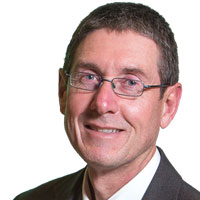
Prof André Dorée. Is head of the department of Construction Management & Engineering at the University of Twente, and member of the 3TU-Bouw Management team. Main interests are integration and innovation in the fragmented construction supply chain, particularly the relationship between market dynamics and technology dynamics. Privatisation of utilities fragments information and operations in utility maintenance and renewal. Prof Dorée has published 100+ papers, co-initiated several industry renewal programs, and is frequent advisor and trainer to public clients and firms in the construction industry.
Abstract Managing Smart Cities' Utilities from Guessing to 3D Geo-dataCities strive to get SMARTER. SMART City environments improve the urban life and enhance the competitiveness and attractiveness of cities. Getting SMARTER requires development and implementation of sustainable integrated solutions and the merging different technology trajectories and societal needs. Many of these solutions anticipated for getting SMARTER require adaptions in the Uraban Built Environment and Urban Infrastructures. While continuous upgrading and renewal are vital, the necessary projects are often complex, budget and time consuming and may create severe disturbance of the existing situation. In Twente we started education and research aimed at Smooth Transition Technologies for SMART City Urban Environment & Infrastructures. Crucial will be 3D modelling of the underground and the interoperability with 2D BIM vector based practise. A living lab approach to 3D map the UT Campus underground is presented.
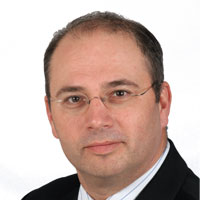
At present Martin Peersmann is general manager of the Large-scale Basemap of the Netherlands (LSV GBKN) organization. His primary task is to execute the transition of this organization from a public-private partnership to the legally founded key-registry Large-scale Topography (BGT). This transition is part of the implementation of the Dutch SDI and e-Government policy under the responsibility of the Ministry of Infrastructure and Environment (IenM) and the Ministry of the Interior and Kingdom Relations (BZK). Since January 2015 he is seconded from the Dutch cadaster to the Ministry of Infrastructure and Environment (IenM) as program manager responsible for the legal and technical implementation of an additional key-registry for the subsurface of the Netherlands (BRO) including the national oil and gas data repository as part of the Dutch mining regulations on behalf of the Ministry of Economic Affairs (EZ).

Peter Csorgits graduated at the Technical University of Budapest, Faculty of Civil Engineering. In 1991 he earned the MSc in Civil Engineering and Surveying. From 1991 to 1993 he participated on secondary training within a scholarship of the Hungarian Academy of Science at the Satellite Geodetic Observatory, Institute of Geodesy, Cartography and Remote Sensing, Penc, Hungary. He is a Licensed Surveyor (senior degree) since 2005, Expert of Geodesy since 2010. From 1993 to 1998 Peter worked as surveyor. Until 2002 he worked as senior sales manager for a company, which sells geodetic GPS instruments. From 2003 to 2007 he was the technical leader at Geofor Land- and Mine Surveying Ltd as Chief Engineer. From 2007 he worked as the Deputy Head of Surveying and GIS Department of Geodézia Zrt. In 2011 he was promoted to Head of Department. From 2013 he is Chief Engineer of Geodézia Zrt. His experiences include large scale mapping, GIS, reference point networks, GPS, cadastral measurements, photo interpretation, construction geodesy, and mobile mapping. Some large projects, which he participated as project manager are: Cadastral Mapping in Nógrád County, Hungary (2 500 sq. km); Inventory Map Renewal of the Hungarian Oil and GAS transportation network (10 000 km); MGCP – Military Topographic Map Database creation interpreting of 300 000 sq. km of satellite and aerial photos; Inventory- and Easement Mapping of Hungarian mid- and low voltage electric network (60 000 km); and Mapping of a few thousand km of road and railway wit Mobile Mapping System.
Abstract Measurements underground for GeoBIM and 3D inventory; data collection in the surveyor point of viewAs a surveyor and the chief engineer of one of the largest surveyor and GIS solution provider companies in Europe, my point of view may differ from the customers who are using GeoBIM or solution providers who are building these type of systems. Our company is focusing on the provision of the highest accuracy and best spatial resolution to our customers, so I would like to demonstrate the most extreme data collecting technologies which can supply base data for any detail level of GeoBIM with especial regard to underground measurements.

Tahir has over 25 years' experience at senior management level. A thought leader who has been influential in encouraging the adoption of BIM with Governments, Developers, Project Managers, Consultants, Contractors, Subcontractors, Service providers, Vendors and System Integrators. He has advised on BIM usage and Integrated Project Delivery implementation for Iconic Projects throughout the Middle East, Asia and Europe. He was instrumental in encouraging the adoption of BIM in ADAC for the new $6.8 Billion Abu Dhabi Airport and the Louvre Museum in Abu Dhabi. He has been involved in writing several BIM Specifications covering the life cycle of projects in the Middle East. Has led the development of BIM in the Middle East region. BuildingSMART International Standards Committee (SC) & BIM Guidelines committee board member. BIM adviser to; Jordan Ministry Of Public Works, the Jordanian Engineers Association, Qatar Supreme FIFA 2022 committee, Qatar Rail, Tourist Development Investment Corporation for the Louvre project.

Deborah is the Head of Property Asset Management for the Ministry of Justice, responsible for asset management for the entire judicial estate. She previously held a central policy FM position in the Cabinet Office, developing an FM Strategy with central government departments to agree how FM is procured and managed across the central government estate to drive out efficiencies. Deborah leads on Government Soft Landings (GSL) policy which is an objective of the Government Construction Strategy to align construction and design with those that use, operate and maintain them. This forms part of the Building Information Modelling (BIM) Level 2 and is being implemented with departments in readiness for the mandate in 2016. Deborah also heads up the FM Profession in government which forms part of the Government Property Profession and wishes to raise the bar by enhancing skills and capabilities. Deborah has over 20 years’ experience in FM, and has worked as a client, supplier and consultant in both the private and public sectors. She has an MSc in FM, is a Certified Member of BIFM, a Fellow of RICS and has recently graduated from Oxford University Major Projects Leadership Programme for Government. Deborah was awarded BIFM FM of the Year 2013 and the Global FM Platinum Excellence award in 2014.

In his current position as managing director ir. Spencer Schols is responsible for the development and construction of the real estate projects, the sale of existing property and maintenance departments. As a person, with 15 years of experience in the real estate development, he tries to realize binding on the interface of people and property, from "nothing" to sustainable neighbourhoods and buildings where the occupant is the central pivot. One of the specific areas of interest is the power of data within an open source environment like openBIM.
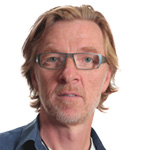
Stig has over 20 years' experience in improving the AEC industry through smarter processes and use of technology. In the late nineties Stig was managing director at The POINT GROUP, who developed the AEC software POINT for the Nordic marked. The products was acquired by Autodesk, and Stig took the responsibility to build up a CAD/BIM organization at the consulting firm NIRAS, and are now manager of a solid BIM department that serves 1600 engineers. During the years Stig has been deeply involved in the Danish and Nordic AES development, and has been PM of several publications and participant in even more.
As Danish buildingSMART chairman from 2006 to 2014 Stig has put a significant footprint on the transformation from CAD to BIM in Denmark. As a member of the "Digital task force" at Danish Association of Consulting Engineers, he continues to combine better processes with better technologies.
He's giving lecture in BIM at The Danish University of Technology, Aalborg University and Vienna University, Austria, and are advisor to clients as NovoNordic, Novozymes, DTU, Region Midtjylland, Copenhagen University, Rigshospitalet.
Main focus in the years to come are, Asset management, BIM deliveries; BIG data and SMARTCities.
Spain

Ignacio Perez Arnal is the co-founder of WITS Institute (What Is The Situation Institute, 2013-present), which tries to understand what happens today to train and transform people. WITS has established different lines of work including BIM ACADEMY® to respond to an emerging demand for BIM (Building Information Modelling) engine in the actual and immediate future of the Construction Sector. He talks about himself as a Former Architect because the difficulty that has brought the traditional training in Architecture and the real needs of the market, the industry and the society. He began his BIM pathway in 2003 with "mebss project" -a modular, off-site, industrialized, bioclimatic and ecologic space- were put on sale as real estate product in Barcelona Meeting Point, a building fair. The compulsory use of advanced software as Bentley AECOsim, and after Catia 3D modeler –and Unix, Mountain Top… before- brings a different vision of what should be the process of design and construction. In 2012, he founded with Marc Binefa, BIM Academy, and create jointly with CAATEEB, the first international event in Europe about BIM, BIM Summit 2015. Now he is its contents director and member of its Strategic Committee, which has led him to be part of the Ambassadors Program of Catalonia Convention Bureau. Founder of ffwC, Fast Forward Building, a think tank about advanced building topics. Member of Linked Data Community Building Group, W3C: This group brings together experts in the area of building information modeling (BIM) and Web of Data to define existing and future technologies use, marry and link requirements for data based applications across the life cycle of buildings.
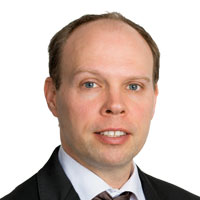
Gerhard's practice focuses primarily on IT law, including Geospatial law, Data Protection law, Telecoms law as well as e-commerce law. One of his main interests are (agile) software development contracts, geospatial and data protection law, and e-commerce, especially negotiation and drafting of contracts. Gerhard Deiters studied law at the University of Cologne. After having passed his First State Exam, he worked at the University of Bonn and a commercial law firm in Cologne. During his legal clerkship, Gerhard Deiters worked at the German Embassy in Jakarta, a commercial law firm and eBay Germany. After having passed his Second State Exam, he worked as Attorney-at-law for one of the biggest German law firms in the area of IT, Telecoms and Data Protection law. Gerhard regularly lectures especially in the fields of Geospatial law and agile contracts.
Abstract Legal Aspects of the use of Geospatial and Building Data in Construction ProjectsGeospatial and building data are widely used in construction projects. The legal aspects vary from project to project and have (as always) to be assessed on an individual basis. However, certain issues are recurrent:
- Licensing / IPR
- Responsibility / Liability for (in)accurate data and/or data processing
- Data Protection
The session will focus on these aspects. The first part deals with the legal nature of geospatial and building data and the consequences for the licensing, use and distribution of geospatial and building data. Where such data is used, the legal implications in terms of responsibility for the provision of accurate data and liability for inaccurate data have to be properly assessed and considered in the relevant legal documents (GTC, contracts et cetera). The second part of the session provides introductory information on these issues. The third part of the session will explain why many geospatial data qualify as personal data in terms of European and national Data Protection Laws. It will also provide a short overview on the legal implications which are caused by such qualification and why in general this does not mean that such data cannot be collected, processed and used in a proper way in construction projects.
United Kingdom

Mark King is EMEA BIM Technical Consultant for Leica Geosystems. Mark joined Leica last year and is focused on Leica's BIM Field Trip solutions that link the office and construction site through 3D data. Having previously managed a BIM department within a UK survey company for 5 years. During this time Mark has delivered numerous survey to BIM projects, for companies such as Tata Steel, Laing O'Rourke and Atkins. He has expertise in 3D laser scanning and in the use of point cloud data in a range of well-known software solutions.

Dr Arto Kiviniemi, Professor of Digital Architectural Design, is one of the internationally leading experts in the integrated Building Information Modelling (BIM) which he has developed both in Finland and internationally since 1996. In 1997-2002 Arto lead the Finnish national R&D programme which created the foundation for Finland's position as one of the leading countries adopting BIM. In May 2010 he moved to UK, first to the University of Salford, where he initiated the first MSc BIM programme in the UK, and in September 2013 he started in his current position at the University of Liverpool.
Internationally Arto's main activities have been related to the International Alliance for Interoperability, now known as buildingSMART International. Arto was one of its founding members in 1996 and acted as the Chairman of the International Council and Executive Committee 1998-2000, Deputy Chairman 2000-2002 and Chairman of the International Technical Management Committee 2005-2007. Currently he is a member of the International Technical Advisory Group. Arto has presented over 100 keynote and invited lectures in international seminars and conferences around the world since 1996. For his international merits in developing integrated BIM Arto received the FIATECH CETI Outstanding Researcher Award in March 2009 and the Order of the Knight of White Rose of Finland in December 2012.
Abstract BIM education – a bottleneck in BIM adoption?Building Information Modelling (BIM), other digital technologies, and emerging visions for integrated project delivery are rapidly changing the Architectural, Engineering and Construction (AEC) industry. These changes are fundamentally transforming the way architects will work in the future and should naturally change the way we educate AEC professionals. However, transforming the education is challenging process. The presentation will focus mainly on architectural education in this integrated AEC framework. There are different views of "if" or "how" BIM should be integrated into the architectural curricula. The concerns include issues such as: 1) architectural curricula is already over-loaded and there is no room for any more content, 2) the practice-driven approach of BIM is not compatible with the explorative character of "design thinking", 3) the structure of the architectural curriculum is not suitable to adopt BIM. However, there are also examples of institutions where BIM is already a part of their curricula, although quite disintegrated from the rest of the content and often missing the integration with other AEC domains. In addition, BIM is not a technological issue only. It is closely related to many other challenges facing architects and their education requiring a broader understanding of social, economic, technological and cultural variables, and how to design buildings which perform to higher environmental and energy standards.
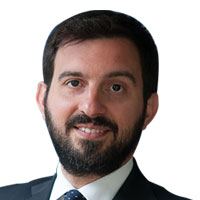
Riccardo Viaggi was nominated Secretary General of the European Builders Confederation (EBC) in 2009. As the EBC Secretary General, he represents the micro, small and medium-sized construction enterprises of the EBC national affiliates in Brussels. In 2013, he was part of the project team proposing the establishment of Small Business Standards (SBS) as the new representative organisation for SMEs in the standardisation field. He now serves as Treasurer and coordinates the construction sector activities of SBS. He is also an expert in the CEN Technical Committee 33 on doors and windows. Through SBS, EBC delegates an expert to CEN TC 442 on BIM.

Rob Roef (1968) is working with Construsoft, in more than 30 countries a strategic partner Trimble. In this role combined with his board membership of buildingSMART Benelux and membership of the International Council of buildingSMART International he has been involved in many (open) BIM implementations all over the globe.

Deborah is the Head of Property Asset Management for the Ministry of Justice, responsible for asset management for the entire judicial estate. She previously held a central policy FM position in the Cabinet Office, developing an FM Strategy with central government departments to agree how FM is procured and managed across the central government estate to drive out efficiencies. Deborah leads on Government Soft Landings (GSL) policy which is an objective of the Government Construction Strategy to align construction and design with those that use, operate and maintain them. This forms part of the Building Information Modelling (BIM) Level 2 and is being implemented with departments in readiness for the mandate in 2016. Deborah also heads up the FM Profession in government which forms part of the Government Property Profession and wishes to raise the bar by enhancing skills and capabilities. Deborah has over 20 years’ experience in FM, and has worked as a client, supplier and consultant in both the private and public sectors. She has an MSc in FM, is a Certified Member of BIFM, a Fellow of RICS and has recently graduated from Oxford University Major Projects Leadership Programme for Government. Deborah was awarded BIFM FM of the Year 2013 and the Global FM Platinum Excellence award in 2014.
Abstract BIM4FM - A UK Government perspectiveAn overview of the UK Government strategy to align construction and design with those that operate and use them. This will introduce the journey to implement Building Information Modelling (BIM) Level 2 for Facilities Management (FM) and Government Soft Landings (GSL) both of which become mandated policy or all central government projects in 2016. It will describe the process of ensuring Facilities Management professionals are included in the early stages of design and construction through a GSL Champion. Discuss the implementation of the GSL process using BIM as a tool following the digital plan of work. Identifying operational costs and whole life approach to projects. Early commissioning training and handover and selection of facilities suppliers and post occupancy evaluation.

Maarten van den Berg is a BIM and Information Manager at iNFRANEA. Making design, engineering, construction and maintenace easier with userfriendly ICT tools motivates him to implement new working methods in construction projects. He implements Building information Management and Systems Engineering in an integrated approach. He and his team use the BIM learning curves in infrastructure and utility building projects for new virtual construction applications. For example the camera simulation evironment helps the traffic management team in CCTV design validation and accident training. The need for information in a projectteam is the key driver for iNFRANEA's risk driven information modelling and management approach.
Abstract Simplifying Facility Management using integrated BIMApplying BIM should reduce the information gaps between the different stages during a construction project. Traditional BIM or Building Information Modelling seems not to meet this need to the fullest, especially owners and operators seem to miss the benefits. Yes, there is improvement, but plenty of non-graphical information which is highly valuable for downstream stages and processes is not taken into account. Think about all historical data during design and construction which is indispensable to perform proper Facility Management. The introduction of integrated BIM or Building Information Management where all non-graphical data is linked to the graphical data or 3D BIM-model opens a whole new world. When applying an integrated and system-based approach, all survey, engineering and construction data is managed from a central 3D BIM-model, yet all objects, activities, interfaces and requirements are managed from a central Systems Engineering database. The integration of the BIM-model with the SE-database puts intelligent 3D-data right at the centre of the project management process, delivering an optimal design, ensuring error-free construction data, delivering valuable FM-information and eliminating failure costs. Easy said, you might think... Well, the combination of commonly applied tools in construction projects can realize such an approach easier than you might expect.

Joris Goos is manager geo-information-systems (GIS) at the City of Rotterdam and is as such responsible for the procurement, quality management, development and usage of geospatial data and related (geo-) information systems. He and his team develop local geo-standards, create and analysegis-information citywide, consult on GeoBIM, open and linked data and build Rotterdams biggest and most compelling 3D City Model up to now. Joris is a member of the Rotterdam steering comittee on BIM and responsible for the development and implementation of BIM on the side of asset management for public spaces.
Abstract Integration of BIM and (3D) Geo-information Management in the Context of Public Spaces and InfrastructureThe collection of data is nowadays digital, big, fast, sometimes in 3D and often rich in information value. In public space and in the context of asset management, information on for example underground infrastructure, objects on ground level, infrastructure designs, and the arrangement of public space needs to come together. The city of Rotterdam learns from many projects on how to adjust deliveries from databases and reach a better adjustment of different sources of information: for example, in BIM. We'll discuss the use of systems engineering and functional specifications, but also the integration of asset information from GIS-systems and new designs. To make that integration possible GIS-data should become available in 3D and a good and rich registration of objects in the underground and on ground level is key. We'll look at some of our projects and ideas to find out where GIS meets BIM.
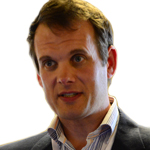
Rollo is the 3D product lead for Ordnance Survey, the National Mapping Authority for Great Britain, where he is tasked with devising the roadmap for the introduction of future 3D products, as well as being responsible for Detailed Content which includes OS MasterMap Topo Layer and the height and imagery portfolios. He has worked within the geospatial sector as a consultant for over 17 years with an ever growing engagement with 3D data and city modelling. Rollo represents Ordnance Survey as an Associate Member of the All Party Parliamentary Group on Smart Cities and leads on a number of Smart City initiatives for Ordnance Survey. He has worked for a range of international engineering consultancies, a mapping consultancy and a 3D software vendor. Rollo is Chartered Fellow of the Royal Geographical Society and also the current Conference Chair for the UK Association for Geographic Information (www.geobig5.com)

Road Management Company of Municipality of Budapest (BKK Közút Zrt.) decided to implement a complete 3D data acquisition, 3D data production and GIS publication/analysis system (RODIS) to provide overall GIS data solution for any department of the municipality, such as road- and traffic management, asset management, road planning and construction fields, building management and many more. After one year of research and development from beginning of October 2012, RODIS is running now and fulfils all the requirements are expected from its services. 30 experts are working in two shifts every day to provide high accuracy GIS data, models, various thematic maps and GSI data analysis results for any departments of the City Council, as well as for the public sector.

Ulf Månsson, senior project manager and partner manager FME, has more than 20 years of experience in the geospatial industry. Since starting out as a developer for the ESRI ArcInfo platform he has continuously been interested in combining different technologies for innovation. In 1997 he developed one of the first Web-mapping solutions in the world. He has focused on connecting data from all kind of geospatial systems, gaining recognition as a Spatial ETL expert. In 2006 he received Safe Software's "FME Innovator Award" and in 2007 he was among the first to be granted official "FME Certified Professional" accreditation. In 2013 he invented a method to stream geodata into the game Minecraft. This was used to create a virtual replica of Stockholm in the project "Blockholm" - lead by The Swedish Centre for Architecture and Design. He is currently working at Sweco, a company group providing qualified services in the fields of consulting engineering, environmental technology and architecture. With approximately 14.500 employees, Sweco carries out tens of thousands of assignments each year in around 70 countries across the globe.
Abstract Geodesign and GamingRecently, several geodata 3D gaming initiatives have made the news. Many of these initiatives are based on the very popular block building game Minecraft created by Mojang AB:
- Government mapping agencies are freely releasing countrywide datasets to promote geography learning in school.
- Organizations launch projects for involving gamers in citizen participation projects.
- Museums and design centers create large scale experiments with help of geodata models.
- Online gamers spontaneously form collaborative crowdsourcing groups for building models of entire cities.
Several hundred millions of users play games like Minecraft. Based on experience from the above initiatives, the presenter will show examples and demonstrate techniques for bringing the creative efforts from this massive user base into the Geodesign& BIM perspective. So far the focus has been mainly on exporting data into the games virtual worlds. However, a life cycle perspective is needed to enable harvesting of data from the gaming community. Recent improvements in the Spatial ETL platform FME makes this possible by allowing integration with GIS, CAD and BIM. The presenter will also try to illustrate the potential in exchanging ideas with the gaming industry.

Mr Engman is CEO of Agency9, a world player in online 3D visualisation with customers internationally and acknowledged with leadership awards in the sector of urban planning for its customer projects. Mr Engman has a background from IBM, BMC Software and Ericsson and has since 2003 been in startup companies in mobile and media software market.
Abstract Streaming GIS/BIM data to web and mobile improves projects in Smart CitiesBuilding sustainable cities involves complex decision of many dimensions. The combination of BIM, GIS and other data is essential but another key aspect is efficient communication of project information to align project teams and stakeholders as well to engage citizen to avoid unnecessary delays as consequence of complaints. Streaming technology for high quality 3D visualisation on web and mobile based on WebGL/HTML5 now make GIS/BIM project information more available in applications and integrated in existing applications. These applications will change the user behaviour and drive investments. This presentation will include live projects online and share lessons learned from development projects in smart cities.

Paul Bryan is the Geospatial Imaging Manager within the Remote Sensing Team of Historic England. Based in York he heads up the Geospatial Imaging team which carries out metric surveys of historic buildings, sites and landscapes using laser scanning, photogrammetry and multi-image based survey approaches. He also advises the external sector on the heritage application of RPAS/UAV/drone platforms and BIM (Building Information Modelling). Paul has extensive knowledge of image-based survey approaches and co-authored the ‘Metric Survey Specifications for Cultural Heritage’ guide, which sets the standard for metric surveys across the heritage sector. In 2014 Paul was awarded Fellowship of the RICS and is the current UK representative for CIPA (the International Scientific Committee for Documentation of Cultural Heritage). Paul also co-chairs the Cultural Heritage Data Acquisition and Processing working group within ISPRS (the International Society for Photogrammetry and Remote Sensing).
Abstract BIM and Heritage – are they a good match?The UK Government Construction Strategy was published in 2011 within which was announced its intention for “collaborative 3D BIM on its projects by 2016”. However most focus still remains on new-build construction meaning that adoption of BIM for existing buildings, in particular heritage, is still unclear. This presentation will discuss the work of English Heritage to assess the relevance and potential adoption of BIM across its own historic estate and the impact of BIM on the external advice now provided by Historic England. Although project application of BIM across the UK heritage sector still remains low such background work has allowed both heritage organisations to increase their knowledge on BIM and formulate a number of research proposals that will hopefully widen appreciation of its respective benefits and target some current areas of concern across a heritage context.

Gary Morin originally trained as a civil engineer and has over 30 years of experience working in the production and support of a range of geographic information systems and CAD software systems. He is now the technical director of Keynetix, which he co-founded in 2000 to specialize in geotechnical data management software. He heads up the geotechnical Building Information Modeling (BIM) development and is responsible for the design and support services for a range of products designed to manage geotechnical data in the BIM process, including the HoleBASE SI, the Geotechnical Module from Autodesk, Inc., and the advance HoleBASE SI extension for AutoCAD Civil 3D software. In recent years Gary has been at the forefront of geotechnical BIM and how it can transform working practices to enable a better understanding and integration of geotechnical data into the wider construction process.
Abstract Geotechnical BIM: Applying BIM principles to GeologyWhile the use of BIM has grown massively in recent years, often being pushed by state initiatives, too frequently it appears to start from the ground up, with the geology and subsurface being ignored. This is a significant omission as the whole premise of BIM is to reduce costs by reducing risk at the early design stage and throughout the lifetime of the project, this happens to be identical to the reasons why geotechnical professionals insist on a quality site investigation. This presentation will look at how the core BIM principles, of data sharing, collaboration and process can be used and applied to the geotechnical process. It will highlight how previous projects can be used as a source of information and insight to the current project, together with a wide range of other data sources, maps drawings and models to help influence and refined site investigation, how by using proven methods data can be captured at source into the model data. How the geotechnical data can be analysed and viewed in conjunction with the wider project information and how it can be modelled and visualised in 3D and made available to the wider project team.

Renzo van Rijswijk is a civil engineer. He works as Manager R&D at Strukton. Strukton is one of the large contractors in the Netherlands. Strukton designs, builds and maintains infrastructural projects. Renzo is an expert in 3D, BIM, objecttype libraries, COINS, Systems Engineering. He develops and introduces new concepts and ways of working and implements this in the organisation. Besides he advises on the BIM process from both the technical and practical point of view.
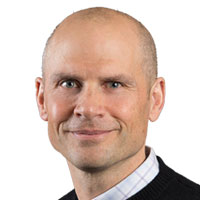
Ken Bragg is Safe Software's European Services Manager and a member of the Professional Services team. A certified FME Trainer & Professional, he provides assistance to partners and customers all over the world. Based in Annecy, France, Ken works closely with Safe's partner community to solve data interoperability challenges with FME.
Abstract Improving Business Decisions for Existing Buildings with BIM and GISWhen building information moves easily between BIM and GIS domains, BIM's rich data elements can be analyzed in context, facilitating more informed decisions. This presentation will explore real-life examples where engineers, architects and facilities managers have overcome interoperability challenges and successfully integrated BIM and GIS data for existing buildings. Featured examples will show how the accessibility of building information has resulted in cost savings when decommissioning a nuclear power plant, improved planning of a National historic site, and more efficient allocation of space in new University buildings. Attendees will learn how BIM and GIS data can be combined, analyzed, and shared to enable better-informed business decisions, leading to time and cost savings.

Artemis Valanis is Rural and Surveying Engineer (NTUA). She works as BIM Consultant in the Hydropower Section in the Energy Division in NORCONSULT AS (Sandvika, Norway). She is an expert in 3D data acquisition, modeling, photogrammetry and BIM. Her work at NORCONSULT AS involves 3D data and modelling fusion towards workflow optimization and seamless process integration from Scan to BIM throughout all relevant project stages.
Abstract Advantages of adopting GEOBIM for rehabilitation and construction of buildings and infrastructure. Working examplesBuilding Information Modeling is definitely on the rise, with a clear aim for its explicit integration with the construction and facility management processes and in spite of all related challenges in its implementation. Politics all around the world in countries leading in the area of BIM, indicate that the benefits to be harnessed from the adoption of BIM in all possible engineering applications show great promise in terms of savings during construction and rehabilitation projects, reduction of gas emissions, influx of new business, improved scheduling and efficient time and risk management and last but not least reenergizing of all construction related business via preference to local materials, building components and service providers. Additionally, and recognizing the fact that BIM is an innately innovative process that has yet to be standardized and adopted by the general majority, a most recent report released by NBS suggests that " we suspect that we are at the midpoint of the adoption curve, and will see more rapid adoption in the coming years, as and when BIM demonstrates its real-world value". However, and according to the authors' experience, it seems that this change and the adoption of BIM is already underway and it is rather driven by the end-users than the service providers. Interestingly, the demand for such services is far greater than what would be expected at such an early stage. Rehabilitation of buildings and infrastructures, facility management, upgrade and renovation of power production units (hydropower plants, electric substations, etc.), expansion - renovation-and-reuse of tunnels and undergrounds structures, restoration of historic buildings, building certification, energy consumption studies, fire safety and crowd simulation, structural analysis of existing structures etc. are only a few of the cases where building and facility owners see the benefits in adopting 3D scanning to BIM processes. Building on the authors' experience with all of the above mentioned types of applications, several examples of Scan to BIM are presented, along with the challenges that arise during data acquisition and processing towards full Level 2 BIM implementation and Facility Management.
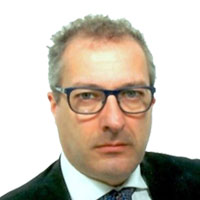
Professor of Surveying & Advanced Geomatics at the Faculty of Civil Engineering at the University of Brescia (Italy), is the founder and President of Gexcel (Geomatics & Excellence). Vassena has a long experience in building and infrastructures surveying and monitoring, and has been involved in several turnkey projects as the 3D Lidar 1 cm accuracy surveying of the old town on Venice, the monitoring of High Speed train lines or the as built and 3D monitoring of tall structures as skyscrapers and cooling towers. He is also authors of several international papers and is the coordinator of various research and innovation projects
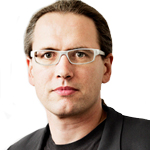
Martin Tamke is Associate Professor at the Centre for Information Technology and Architecture (CITA - http://cita.karch.dk) in Copenhagen. He is pursuing a design led research in the interface and implications of computational design and its materialization. He joined the newly founded research centre CITA in 2006 and shaped its design based research practice. Projects on new design and fabrication for wood and composites led to a series of digitally fabricated demonstrators that explore an architectural practice engaged with bespoke materials and behaviour. Martin initiated and conducted research projects in the emerging field of digital production in building industry and architectural computation. The research connects academic and industrial partners from architecture and engineering, computer and material science and the crafts. Currently he is involved in the EU framework 7 project DURAARK http://duraark.eu, the Danish funded 4 year Complex Modelling research project http://cita.karch.dk and the adapt-r adapt-r.eu and InnoChain http://innochain.net PhD research networks.
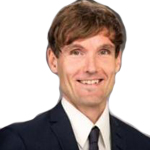
Stefan Dietze (http://stefandietze.net) is a Research Group Leader at the L3S Research Center (Germany). His research interests are in the broader context of Web and Data Science, specifically Semantic Web and Linked Data technologies and their application to Web data integration and analysis problems. Stefan currently is coordinator of the European R&D projects LinkedUp (http://linkedup-project.eu) and DURAARK (http://duraark.eu) and he has been involved in leading roles in a large number of international and national R&D projects. His work has been published in major conferences and journals and he is member of numerous programme committees and editorial boards. Stefan is a frequent invited speaker and he has been on the organisation committees of a range of tutorials, workshops and conferences, incl. ACM Web Science or the Extended Semantic Web Conference.

Jakob Beetz (https://www.isbe.tue.nl/people/jakob/ ) is an assistant professor at the Department of the Built Environment at the Eindhoven University of Technology, The Netherlands. His research interests are focused on Building Information Modeling, Computer Supported Collaborative Work and Interoperability. One of focus areas is the improvement of collaboration by bringing concepts from the Linked Data and Semantic Web fields into the construction domain. He co-heads the Linked Data Group within the buildingSMART organization. He is active in a number of national and international research initiatives and projects including the DURAARK project for the digital long term preservation of semantically rich building models (http://www.duraark.eu). He is the co-founder of the Open Source collaboration platform bimserver.org and has served as the technical coordinator for the BeNeLux chapter of the buildingSMART organization.

Thomas Krijnen is a researcher at the Eindhoven University of Technology and founder of AECgeeks, a consultancy company that does research and development in the Architecture Engineering and Construction industry. Thomas is the initiator and main developer of IfcOpenShell, one of leading open source software toolkits centered around the Industry Foundation Classes, Building Information Modelling and interoperability. At the university Thomas is a doctoral candidate and involved in the DURAARK project for the digital long term preservation of semantically rich building models.

Henrik Leander Evers graduated with a M.Sc. in Architectural Design from Aalborg University in 2011 after studies both in Denmark and Mexico and an internship at the R&D department GXN 3XN (gxn.3xn.com), Copenhagen. Since then he has been conducting research in computational strategies in the architectural domain – from algorithmic and parametric design through digital registration technologies to computational approaches in renovation, retrofitting and fabrication – as an architectural research assistant at Centre for Information Technology and Architecture (CITA http://cita.karch.dk), The Royal Danish Academy of Fine Arts - Schools of Architecture, Design and Conservation, Copenhagen, Denmark.

Friso Penninga is senior advisor Geo-information at the Municipality of The Hague. He is working on several topics, such as 3D city modeling, open data, the implementation of the base registration large scale topography and the road towards the Environmental Planning Act. Besides this he works parttime at Geonovum as project manager PDOK Advisory. Friso holds a PhD in 3D Topography from Delft University of Technology.
VU Amsterdam
The Netherlands

Sanne Hettinga is a PhD student at the VU Amsterdam. She is studying the possibilities of using 3D and BIM data for environmental models, specifically energy models. Before her PhD she worked as a researcher at Geodan and studied Energy science at Utrecht Univeresity.

Remote sensing and GIS expert. His main profession is GIS data capture and geodatabase design of topographic mapping to high resolution 3D city mapping based on remote sensed photogrammetric or LIDAR data. Currently he is chief of GIS Application Development dept. of Budapest Közút Zrt (Road management company of Budapest council). He is also head of RODIS (Road Data Information System) project, a complex 3D GIS solution from 3D data capture to on-line data publication based on MLS (Mobile Laser scanning) and TLS (Terrestrial Laser scanning) LIDAR data. RODIS provides high resolution and complex geodatabase for various purposes from road management to building management activities.